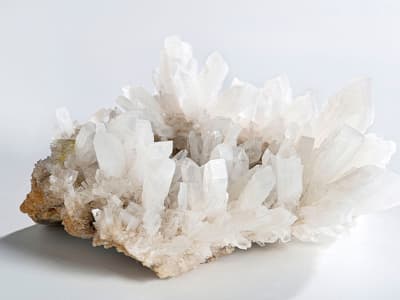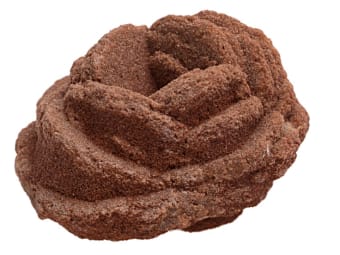Barite gets its name from the Greek word baros (heavy) due to its high specific gravity. Barite is mostly mined as an ore for barium. It can form as crystals or as an aggregate. The mineral is most often white or colorless but can form in array of colors. Crystals are transparent to opaque with prismatic, tabular, bladed, or acicular habits. Aggregates can be massive, granular, concretionary, and fibrous. The crystals are soft and brittle and have perfect cleavage in two directions. Specimens should be kept from heat, and they might fade in sunlight. Specimens might fluoresce and some have greenish white phosphoresce. Specimens are occasionally thermoluminescent. Gemstones are rare and seldom exceed 10ct.
General Information
Tolerance:(+0.001/-0.002)
LWUV: Usually yellowish white but can be pale yellow, orange yellow, orange, bluish white or greenish white
Barite Colors
-
 Blue
Blue -
 Brown
Brown -
 Brown
Brown -
 Colorless
Colorless -
 Gray
Gray -
 Green
Green -
 Pink
Pink -
 Red
Red -
 White
White -
 Yellow
Yellow
Alternate Names
Baryte, Heavyspar, Desert Rose, Yellowspar
Countries of Origin
Romania; Hungary; United States of America; Ukraine; United Kingdom of Great Britain and Northern Ireland; India; Spain; Canada; Austria; Belgium; Unknown; Norway; China; Ireland; Namibia; Poland; Italy; South Africa; Slovakia; Australia; France; Peru; Germany
History
The phosphorescent radiating form of barite was known as Bologna Stone after it was found outside Bologna, Italy by Vincenzo Casciarolo in the early 1600’s. Alchemists were fascinated by the "glowing stone of Bologna" and performed many experiments on the material. Dietrich Ludwig Gustav Karsten named the mineral barite in 1800. Carl Scheele argued that barite contained a new element in 1774 but it was not until 1808 when Sir Humphry Davy first isolated barium from barium salts. The overwhelming majority of barite is mined to produce heavy drilling mud in the oil and gas industry. The other industrial uses for barite are for radiation shielding, medical testing, pigments for paint, construction materials and weighted paper.
Care
Barite is very soft, so be mindful of scratching. Avoid abrasives, ultrasonic, solvents, or exposure to heat.
Species/Variety
Celestobarite
Celestobarite is barite that contains strontium.
Barite Rose
Barite roses are barite concretions found in sand and sandstone. As the disc shaped barite crystalizes in between sand grains radial or rosette shaped specimens are formed. If the specimen contains hematite the roses will be reddish in color.



